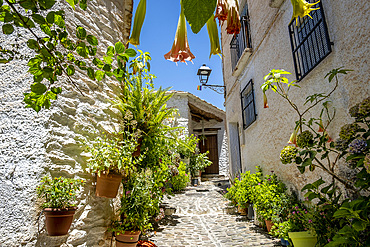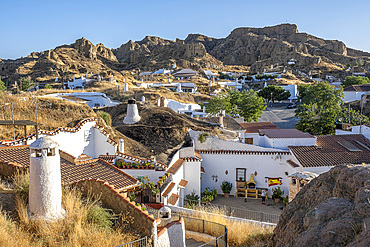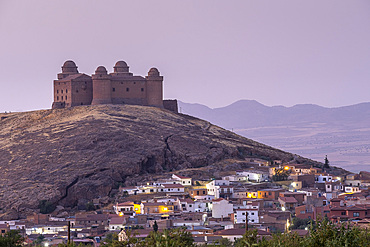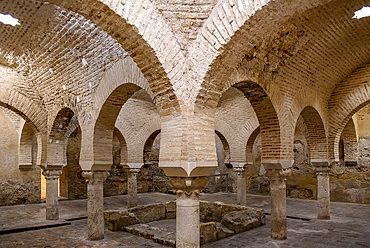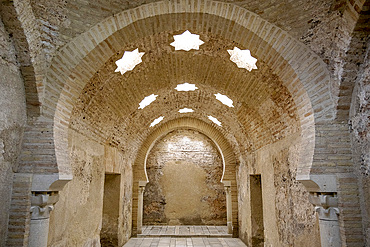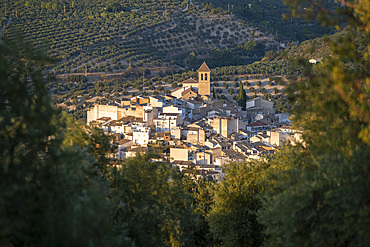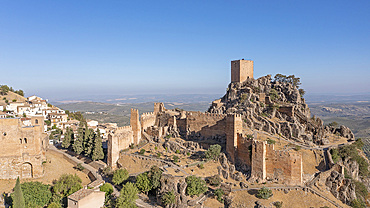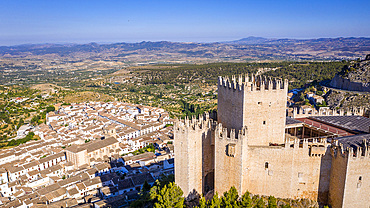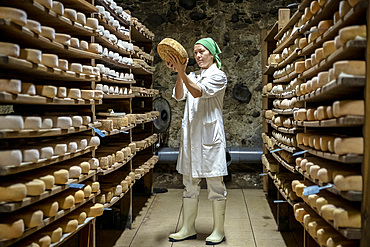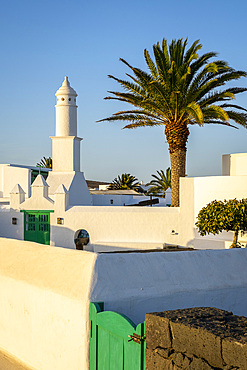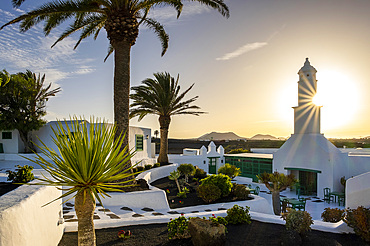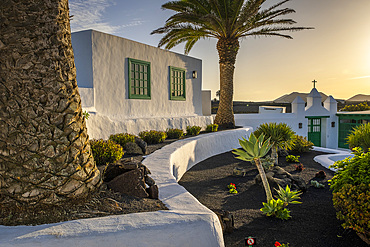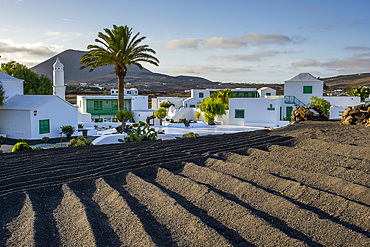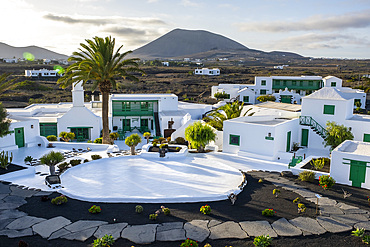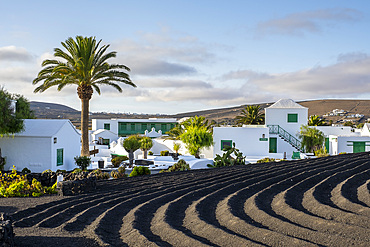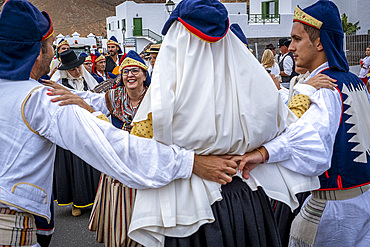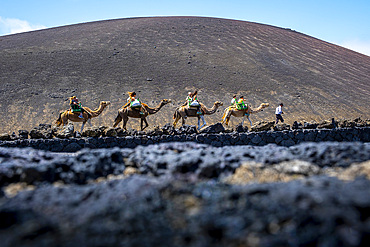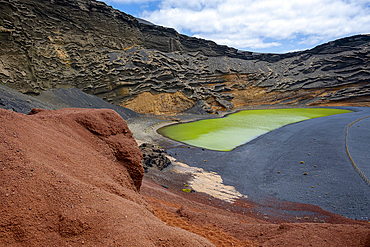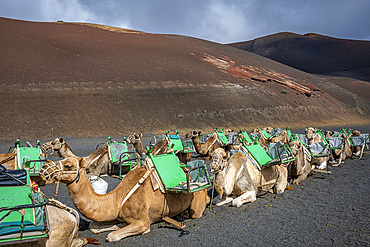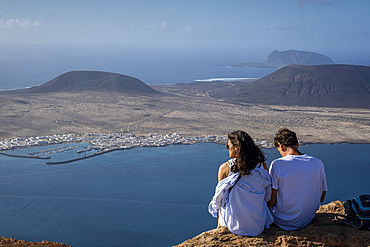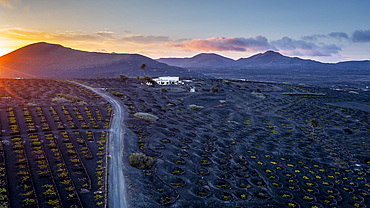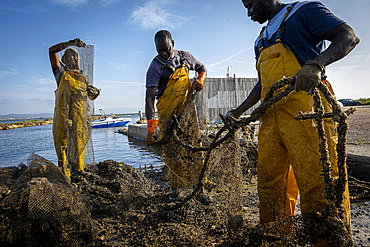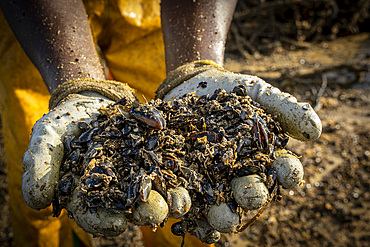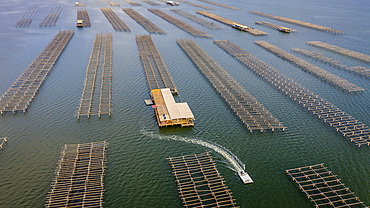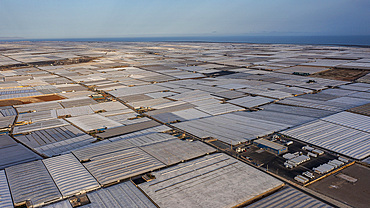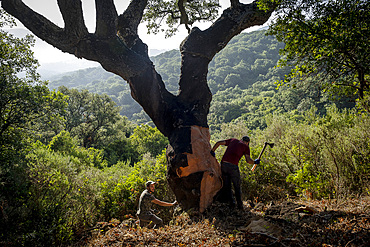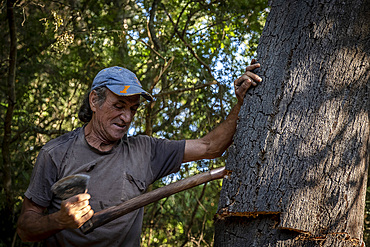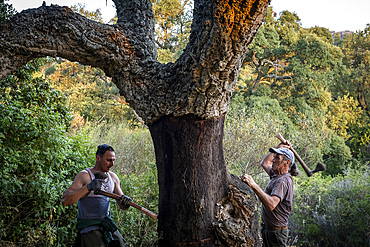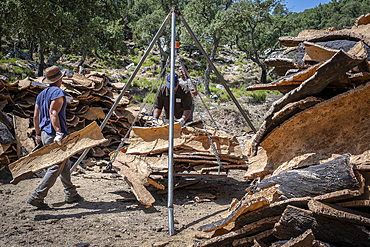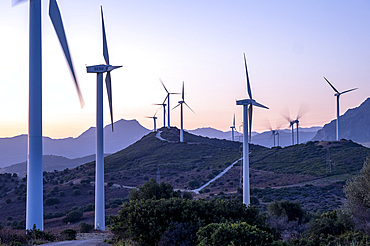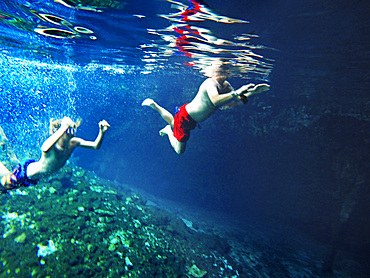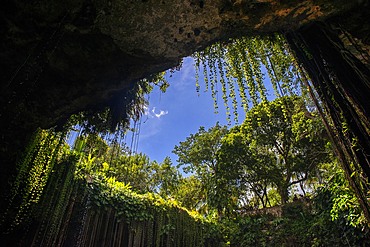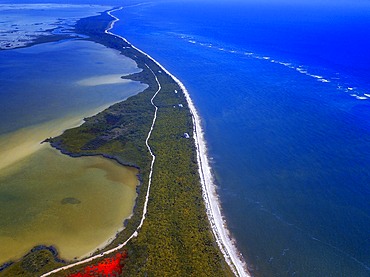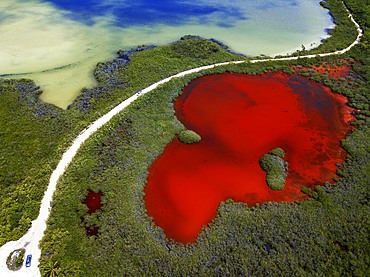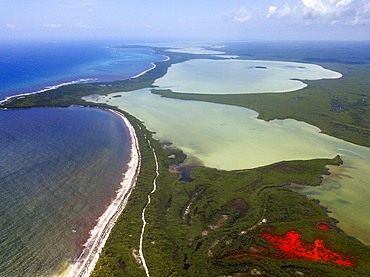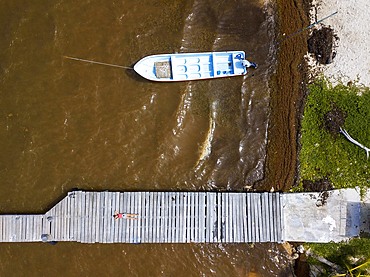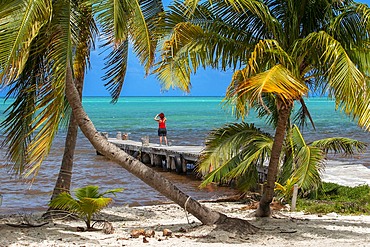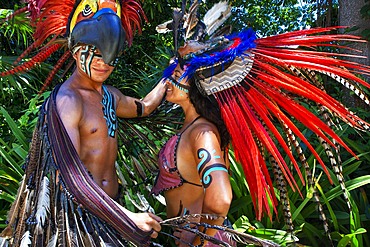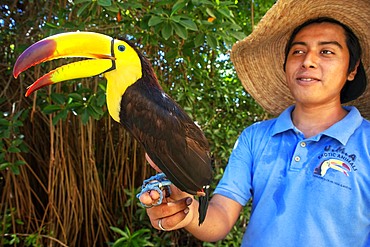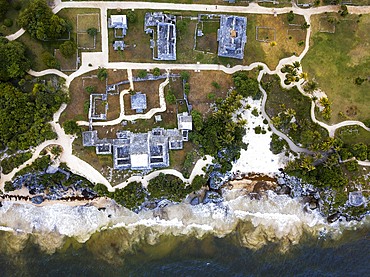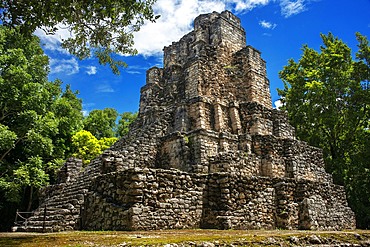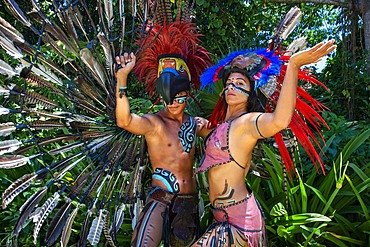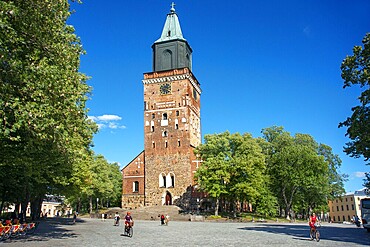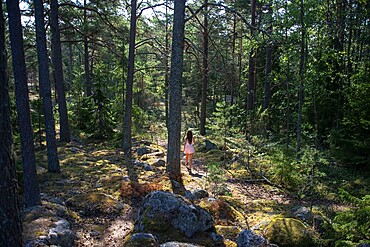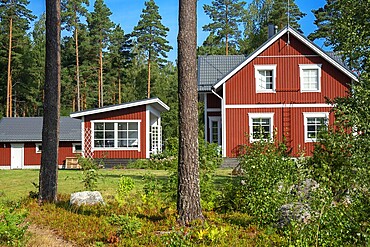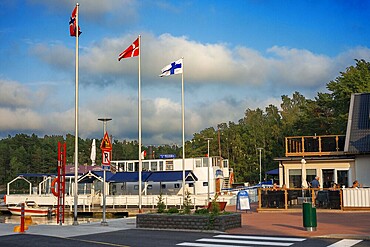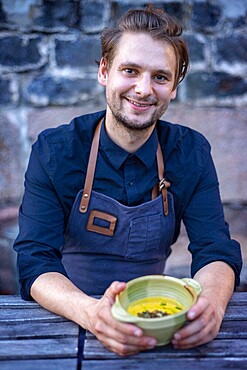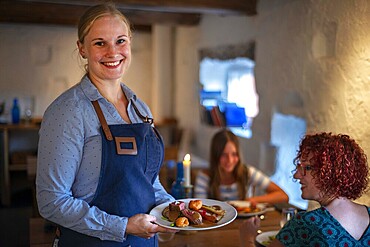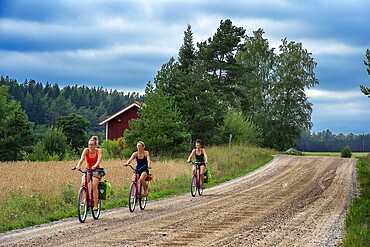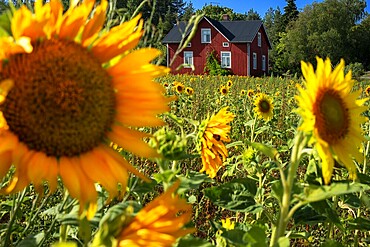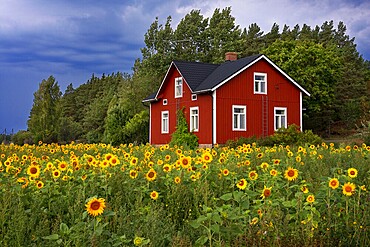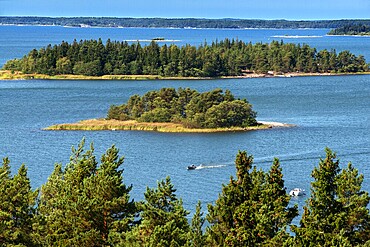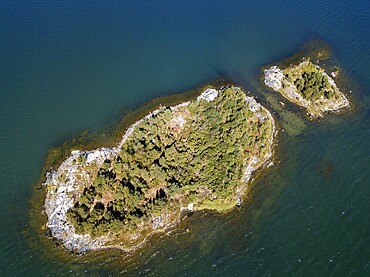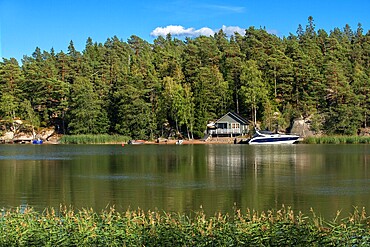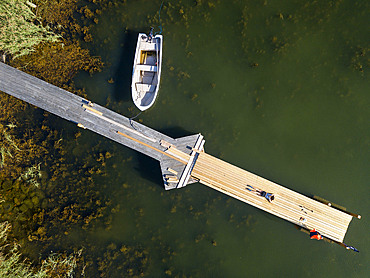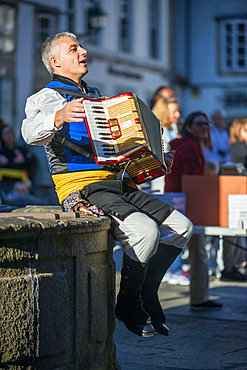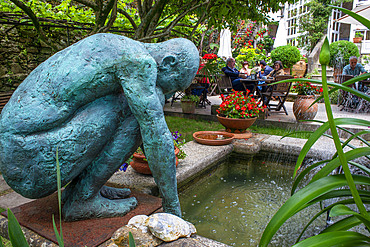Recent searches
Loading...
1350-6514 - Traditional Alpujarra architecture in Pampaneira, a small mountain village in the Alpujarras, Granada, Andalusia, Spain
1350-6512 - Castillo de la Calahorra castle, La Calahorra, Andalusia, Spain
1350-6511 - El Tornillo rock formation. El Torcal de Antequera, Sierra del Torcal, Antequera, M�laga, Andalusia, Spain. Karstic rock formations
1350-6510 - Arab Baths Cultural Center at Villardompardo Palace, Jaen city. Andalusia, Spain
1350-6509 - Arab Baths Cultural Center at Villardompardo Palace, Jaen city. Andalusia, Spain
1350-6508 - The village of Quesada and olive groves, Jaen province, Andalucia, Spain.
1350-6507 - Jaen Cathedral at night, Jaen, Andalucia, Spain.
1350-6506 - Castle ruins, in La Iruela, Sierra de Cazorla, Andalusia, Spain
1350-6505 - Renaissance castle and white village, Velez Blanco, Almeria, Andalucia, Spain,
1350-6503 - Teide and Roque Cinchado, in Los Roques de Garcia, volcanic rock formations in Teide national park, Tenerife, Canary Islands, Spain
1350-6504 - Sculpture Our Fatherᄡs House by Eduardo Chillida In Parque De Los Pueblos De Europa Guernica Gernika-Lumo Basque Country Spain
1350-6502 - Teide, volcanic rock formations, and retama (Spartocytisus supranubius) in Teide national park, Tenerife, Canary Islands, Spain
1350-6501 - Teide, volcanic rock formations, and retama (Spartocytisus supranubius) in Teide national park, Tenerife, Canary Islands, Spain
1350-6500 - Elena at work, controlling the ripening process. Cheese shop, Formatgeria Mas dᄡEroles, artisan cheese making, Adrall village, Alt Urgell, Lleida, Catalonia, Spain
1350-6499 - Casa Museo del Campesino, designed by Cesar Manrique, San Bartolome, Lanzarote island, Canary islands, Spain
1350-6498 - Casa Museo del Campesino, designed by Cesar Manrique, San Bartolome, Lanzarote island, Canary islands, Spain
1350-6497 - Casa Museo del Campesino, designed by Cesar Manrique, San Bartolome, Lanzarote island, Canary islands, Spain
1350-6495 - Casa Museo del Campesino, designed by Cesar Manrique, San Bartolome, Lanzarote island, Canary islands, Spain
1350-6496 - Casa Museo del Campesino, designed by Cesar Manrique, San Bartolome, Lanzarote island, Canary islands, Spain
1350-6494 - Casa Museo del Campesino, designed by Cesar Manrique, San Bartolome, Lanzarote island, Canary islands, Spain
1350-6493 - Casa Museo del Campesino, designed by Cesar Manrique, San Bartolome, Lanzarote island, Canary islands, Spain
1350-6491 - Spain, Canary Islands, Lanzarote Island, Mancha Blanca, Romer�a festival celebrating the virgen de los dolores
1350-6492 - Monumento Al Campesino, designed by Cesar Manrique, San Bartolome, Lanzarote island, Canary islands, Spain
1350-6490 - Los Buches, Spain, Canary Islands, Lanzarote Island, Mancha Blanca, Romer�a festival celebrating the virgen de los dolores
1350-6488 - Tourists riding camels, in Timanfaya National Park, Lanzarote, Canary Islands, Spain
1350-6489 - El Golfo beach, Lago verde, Green Lagoon, Charco de los Ciclos, El Golfo, Lanzarote, Canary Islands, Spain,
1350-6487 - Echadero de Camellos, Camels wait for the next ride with tourists, Timanfaya National Park, Ruta de Los Volcanes, Lanzarote, Spain
1350-6486 - Lava beaches at the fishing village El Golfo, Lanzarote island, Canary islands, Spain,
1350-6484 - Vinery, La Geria, Lanzarote, Canary Islands, Spain
1350-6485 - Panorama of La Graciosa Island with Caleta del Sebo town, from Mirador del Rio. Lanzarote, Canary Islands, Spain
1350-6483 - Vinery, La Geria, Lanzarote, Canary Islands, Spain
1350-6482 - Men working in mussel farming. In Fangar Bay. Ebro Delta Nature Reserve, Tarragona, Catalonia, Spain.
1350-6480 - Men collecting mussels. In Fangar Bay mussels and oysters are farmed. Ebro Delta Nature Reserve, Tarragona, Catalonia, Spain.
1350-6481 - Worker shows mussels dead due to heat wave. In Fangar Bay mussels and oysters are farmed. Ebro Delta Nature Reserve, Tarragona, Catalonia, Spain.
1350-6478 - Aerial view of the Levante beach and the skyline by night. Benidorm. Alicante. Valencia Community. Spain
1350-6476 - In Fangar Bay mussels and oysters are farmed. Ebro Delta Nature Reserve, Tarragona, Catalonia, Spain.
1350-6477 - Greenhouses. Sea of plastics, in El Ejido, Almer�a, Andalusia, Spain
1350-6475 - Cork collecting Natural Park Los Alcornocales Cortes de la Frontera Andalusia Malaga Spain
1350-6474 - Cork collecting Natural Park Los Alcornocales Cortes de la Frontera Andalusia Malaga Spain
1350-6473 - Cork collecting Natural Park Los Alcornocales Cortes de la Frontera Andalusia Malaga Spain
1350-6471 - Cork collecting Natural Park Los Alcornocales Cortes de la Frontera Andalusia Malaga Spain
1350-6472 - Cork collecting Natural Park Los Alcornocales Cortes de la Frontera Andalusia Malaga Spain
1350-6470 - Cork collecting Natural Park Los Alcornocales Cortes de la Frontera Andalusia Malaga Spain
1350-6469 - Cork collecting Natural Park Los Alcornocales Cortes de la Frontera Andalusia Malaga Spain
1350-6636 - Aerial view of Mayan Ruin of Chichen Itza Archaeological Site Yucatan Peninsula, Quintana Roo, Caribbean Coast, Mexico
1350-6468 - Wind power plant, in Casares, Malaga, Spain
1350-6635 - Aerial view of Mayan Ruin of Chichen Itza Archaeological Site Yucatan Peninsula, Quintana Roo, Caribbean Coast, Mexico
1350-6630 - Swimming at Cenote Ik Kil in Yucatan, Mexico, a natural pit, or sinkhole near Chichen Itza. Yucatan Peninsula, Quintana Roo, Mexico. Ik Kil was sacred to the Mayans who used this cenote for both relaxation and ritual services centuries ago.
1350-6633 - Gran Cenote de Tulum in Yucatan Peninsula, Quintana Roo, Mexico. There are thousands of cenotes dotted all over Mexico���s Yucatan Peninsula, and their existence is as much a defining characteristic of the region as is the distinct geological feature from which they result. Once revered by the ancient Mayans as sacred wells, they are now magnets for tourists, adventurers, and explorers alike.
1350-6628 - Cenote Ik Kil in Yucatan, Mexico, a natural pit, or sinkhole near Chichen Itza. Yucatan Peninsula, Quintana Roo, Mexico. Ik Kil was sacred to the Mayans who used this cenote for both relaxation and ritual services centuries ago.
1350-6627 - Aerial view of Punta Allen Sian Ka'an Reserve, Yucatan Peninsula, Mexico. Red lagoon near Boca Paila Bridge.
In the language of the Mayan peoples who once inhabited this region, Sian Ka'an means Origin of the Sky. Located on the east coast of the Yucatán peninsula, this biosphere reserve contains tropical forests, mangroves and marshes, as well as a large marine section intersected by a barrier reef. It provides a habitat for a remarkably rich flora and a fauna comprising more than 300 species of birds, as well as a large number of the region's characteristic terrestrial vertebrates, which cohabit in the diverse environment formed by its complex hydrological system.
Along its roughly 120 kilometres of coastline, the property covers over 400,000 hectares of land ranging from sea level to only ten m.a.s.l. The property boasts diverse tropical forests, palm savannah, one of the most pristine wetlands in the region, lagoons, extensive mangrove stands, as well as sandy beaches and dunes. The 120,000 hectares of marine area protect a valuable part of the Mesoamerican Barrier Reef and seagrass beds in the shallow bays. The lush green of the forests and the many shades of blue of the lagoons and the Caribbean Sea under a wide sky offer fascinating visual impressions.
1350-6623 - Aerial view of Punta Allen Sian Ka'an Reserve, Yucatan Peninsula, Mexico. Red lagoon near Boca Paila Bridge.
In the language of the Mayan peoples who once inhabited this region, Sian Ka'an means Origin of the Sky. Located on the east coast of the Yucatán peninsula, this biosphere reserve contains tropical forests, mangroves and marshes, as well as a large marine section intersected by a barrier reef. It provides a habitat for a remarkably rich flora and a fauna comprising more than 300 species of birds, as well as a large number of the region's characteristic terrestrial vertebrates, which cohabit in the diverse environment formed by its complex hydrological system.
Along its roughly 120 kilometres of coastline, the property covers over 400,000 hectares of land ranging from sea level to only ten m.a.s.l. The property boasts diverse tropical forests, palm savannah, one of the most pristine wetlands in the region, lagoons, extensive mangrove stands, as well as sandy beaches and dunes. The 120,000 hectares of marine area protect a valuable part of the Mesoamerican Barrier Reef and seagrass beds in the shallow bays. The lush green of the forests and the many shades of blue of the lagoons and the Caribbean Sea under a wide sky offer fascinating visual impressions.
1350-6625 - Aerial view of Punta Allen Sian Ka'an Reserve, Yucatan Peninsula, Mexico. Red lagoon near Boca Paila Bridge.
In the language of the Mayan peoples who once inhabited this region, Sian Ka'an means Origin of the Sky. Located on the east coast of the Yucatán peninsula, this biosphere reserve contains tropical forests, mangroves and marshes, as well as a large marine section intersected by a barrier reef. It provides a habitat for a remarkably rich flora and a fauna comprising more than 300 species of birds, as well as a large number of the region's characteristic terrestrial vertebrates, which cohabit in the diverse environment formed by its complex hydrological system.
Along its roughly 120 kilometres of coastline, the property covers over 400,000 hectares of land ranging from sea level to only ten m.a.s.l. The property boasts diverse tropical forests, palm savannah, one of the most pristine wetlands in the region, lagoons, extensive mangrove stands, as well as sandy beaches and dunes. The 120,000 hectares of marine area protect a valuable part of the Mesoamerican Barrier Reef and seagrass beds in the shallow bays. The lush green of the forests and the many shades of blue of the lagoons and the Caribbean Sea under a wide sky offer fascinating visual impressions.
1350-6620 - Aerial view of Punta Allen Sian Ka'an Reserve, Yucatan Peninsula, Mexico. Red lagoon near Boca Paila Bridge.
In the language of the Mayan peoples who once inhabited this region, Sian Ka'an means Origin of the Sky. Located on the east coast of the Yucatán peninsula, this biosphere reserve contains tropical forests, mangroves and marshes, as well as a large marine section intersected by a barrier reef. It provides a habitat for a remarkably rich flora and a fauna comprising more than 300 species of birds, as well as a large number of the region's characteristic terrestrial vertebrates, which cohabit in the diverse environment formed by its complex hydrological system.
Along its roughly 120 kilometres of coastline, the property covers over 400,000 hectares of land ranging from sea level to only ten m.a.s.l. The property boasts diverse tropical forests, palm savannah, one of the most pristine wetlands in the region, lagoons, extensive mangrove stands, as well as sandy beaches and dunes. The 120,000 hectares of marine area protect a valuable part of the Mesoamerican Barrier Reef and seagrass beds in the shallow bays. The lush green of the forests and the many shades of blue of the lagoons and the Caribbean Sea under a wide sky offer fascinating visual impressions.
1350-6616 - Aerial view of Punta Allen Sian Ka'an Reserve, Yucatan Peninsula, Mexico.
In the language of the Mayan peoples who once inhabited this region, Sian Ka'an means Origin of the Sky. Located on the east coast of the Yucatán peninsula, this biosphere reserve contains tropical forests, mangroves and marshes, as well as a large marine section intersected by a barrier reef. It provides a habitat for a remarkably rich flora and a fauna comprising more than 300 species of birds, as well as a large number of the region's characteristic terrestrial vertebrates, which cohabit in the diverse environment formed by its complex hydrological system.
Along its roughly 120 kilometres of coastline, the property covers over 400,000 hectares of land ranging from sea level to only ten m.a.s.l. The property boasts diverse tropical forests, palm savannah, one of the most pristine wetlands in the region, lagoons, extensive mangrove stands, as well as sandy beaches and dunes. The 120,000 hectares of marine area protect a valuable part of the Mesoamerican Barrier Reef and seagrass beds in the shallow bays. The lush green of the forests and the many shades of blue of the lagoons and the Caribbean Sea under a wide sky offer fascinating visual impressions.
1350-6615 - Palms and old pier in Punta Allen Sian Ka'an Reserve, Yucatan Peninsula, Mexico.
In the language of the Mayan peoples who once inhabited this region, Sian Ka'an means Origin of the Sky. Located on the east coast of the Yucatán peninsula, this biosphere reserve contains tropical forests, mangroves and marshes, as well as a large marine section intersected by a barrier reef. It provides a habitat for a remarkably rich flora and a fauna comprising more than 300 species of birds, as well as a large number of the region's characteristic terrestrial vertebrates, which cohabit in the diverse environment formed by its complex hydrological system.
Along its roughly 120 kilometres of coastline, the property covers over 400,000 hectares of land ranging from sea level to only ten m.a.s.l. The property boasts diverse tropical forests, palm savannah, one of the most pristine wetlands in the region, lagoons, extensive mangrove stands, as well as sandy beaches and dunes. The 120,000 hectares of marine area protect a valuable part of the Mesoamerican Barrier Reef and seagrass beds in the shallow bays. The lush green of the forests and the many shades of blue of the lagoons and the Caribbean Sea under a wide sky offer fascinating visual impressions.
1350-6611 - Underwater close up view of open coral polyp during a dive, Cancun, Quintana Roo, Mexico
1350-6608 - Mexican aztec dress gods at Grand Palladium White Sand Resort and Spa in Riviera Maya, Yucatan Peninsula, Quintana Roo, Caribbean Coast, Mexico.
Aztec clothing was generally loose fitting and did not completely cover the body. When the Spanish arrived in Mexico, the people were surprised to see them in their full armour, with only their faces exposed.
Aztec clothes were generally made of cotton (which was imported) or ayate fiber, made from the Maguey Cactus (also called the Century Plant or American Aloe). Women would weave the fibers into clothing, a task girls were taught as young teenagers. Because of their vast trading network, the Aztecs were able to make use of a beautiful array of dyes, creating the brilliant
1350-6609 - Kayakking in front of the beach of Grand Palladium White Sand Resort and Spa in Riviera Maya, Yucatan Peninsula, Quintana Roo, Caribbean Coast, Mexico
1350-6606 - A Mexican staff member holds a tucan at Grand Palladium White Sand Resort and Spa in Riviera Maya, Yucatan Peninsula, Quintana Roo, Caribbean Coast, Mexico
1350-6602 - Aerial view of Grand Palladium White Sand Resort and Spa in Riviera Maya, Yucatan Peninsula, Quintana Roo, Caribbean Coast, Mexico
1350-6597 - Aerial views of El Castillo and the Ruins of the Mayan temple grounds at Tulum, Quintana Roo, Yucatan, Mexico. Tulum is the site of a pre-Columbian Mayan walled city which served as a major port for Coba, in the Mexican state of Quintana Roo. The ruins are situated on 12 meter 39 ft tall cliffs along the east coast of the Yucatán Peninsula on the Caribbean Sea in the state of Quintana Roo, Mexico. Tulum was one of the last cities built and inhabited by the Maya; it was at its height between the 13th and 15th centuries and managed to survive about 70 years after the Spanish began occupying Mexico. Old World diseases brought by the Spanish settlers appear to have resulted in very high fatalities, disrupting the society, and eventually causing the city to be abandoned.
1350-6599 - Aerial views of El Castillo and the Ruins of the Mayan temple grounds at Tulum, Quintana Roo, Yucatan, Mexico. Tulum is the site of a pre-Columbian Mayan walled city which served as a major port for Coba, in the Mexican state of Quintana Roo. The ruins are situated on 12 meter 39 ft tall cliffs along the east coast of the Yucatán Peninsula on the Caribbean Sea in the state of Quintana Roo, Mexico. Tulum was one of the last cities built and inhabited by the Maya; it was at its height between the 13th and 15th centuries and managed to survive about 70 years after the Spanish began occupying Mexico. Old World diseases brought by the Spanish settlers appear to have resulted in very high fatalities, disrupting the society, and eventually causing the city to be abandoned.
1350-6596 - Estructura 8I-13 El Castillo at Chunyaxche Muyil Maya ruins, rainforest near Tulum, Yucatan Peninsula, Quintana Roo, Mexico
1350-6595 - Mexican aztec dress gods at Grand Palladium White Sand Resort and Spa in Riviera Maya, Yucatan Peninsula, Quintana Roo, Caribbean Coast, Mexico.
Aztec clothing was generally loose fitting and did not completely cover the body. When the Spanish arrived in Mexico, the people were surprised to see them in their full armour, with only their faces exposed.
Aztec clothes were generally made of cotton (which was imported) or ayate fiber, made from the Maguey Cactus (also called the Century Plant or American Aloe). Women would weave the fibers into clothing, a task girls were taught as young teenagers. Because of their vast trading network, the Aztecs were able to make use of a beautiful array of dyes, creating the brilliant
1350-6658 - Railway station, Helsinki architect Saarinen, with figures by Wikstrom
1350-6657 - Helsinki cycling Finland, view of bikes for rent in the Helsinki City Cycle Scheme parked closely together in Kauppatori (Market Square), Finland
1350-6655 - Turku Cathedral is Mother Church of the Evangelical Lutheran in Finland
1350-6651 - Wood structure of Venice Biennale 2012: New Forms in Wood display now at the city Hall Park at Turku. European capital of culture 2011 was held at 19th of August 2011. The pavilion was the result of a workshop that was a joint collaboration with the students from both Oulu and Columbia Universities. Eero Lundv�n and Markus Wikar were coordinating the student���s efforts in Finland.
Guest lecturers at the opening ceremony included Phillip Anzalone (Columbia University) and professor Rainer Mahlamv�ki (University of Oulu). For panel discussion, also Emmi Keskisarja (Tampere University of Technology) and Toni v�sterlund (University of Oulu) were present.
1350-6647 - Old town hall and buildings on the banks of the River Aura in Turku Finland.
1350-6641 - Själö Church in Seili Island in Väståboland in Pargas in Southwest Finland Turku archipelago. The archipelago ring road or Saariston rengastie is full of things to see, do and do. The Archipelago Trail can be taken clockwise or counter clockwise, starting in the historical city of Turku, and continuing through rural archipelago villages and astonishing Baltic Sea sceneries. The Trail can be taken from the beginning of June until the end of August.
1350-6634 - Jungfrudansen stone labyrinth in Finby near Nagu Archipelago trail Finland Southwest Finland Turku archipelago. Nature walk to a turf maze know as a ���virgin dance���. This is part of St Olav Waterway, a new long distance pilgrims hiking path from Turku to Trondheim in Norway. Trondheim was the Nordic Santiago de Compostela in the Middle Ages.
1350-6632 - Wild nature forest near Jungfrudansen stone labyrinth in Finby near Nagu Archipelago trail Finland Southwest Finland Turku archipelago. Nature walk to a turf maze know as a ���virgin dance���. This is part of St Olav Waterway, a new long distance pilgrims hiking path from Turku to Trondheim in Norway. Trondheim was the Nordic Santiago de Compostela in the Middle Ages.
1350-6629 - Typical wooden house in in Nagu village or Nauvo island in Väståboland in Pargas in Southwest Finland Turku archipelago. The archipelago ring road or Saariston rengastie is full of things to see, do and do. The Archipelago Trail can be taken clockwise or counter clockwise, starting in the historical city of Turku, and continuing through rural archipelago villages and astonishing Baltic Sea sceneries. The Trail can be taken from the beginning of June until the end of August.
1350-6626 - Pizzeria Restaurant in Nagu harbour or Nauvo island in Väståboland in Pargas in Southwest Finland Turku archipelago. The archipelago ring road or Saariston rengastie is full of things to see, do and do. The Archipelago Trail can be taken clockwise or counter clockwise, starting in the historical city of Turku, and continuing through rural archipelago villages and astonishing Baltic Sea sceneries. The Trail can be taken from the beginning of June until the end of August.
1350-6624 - Chef William Hellgren at the fabulous Backpocket Restaurant in Hotel Nestor in Korpo or Korppoo island, Korpostrom coast Southwest Finland Turku archipelago. The archipelago ring road or Saariston rengastie is full of things to see, do and do. The Archipelago Trail can be taken clockwise or counter clockwise, starting in the historical city of Turku, and continuing through rural archipelago villages and astonishing Baltic Sea sceneries. The Trail can be taken from the beginning of June until the end of August.
1350-6619 - Fresh tomatoes in Isaksson���s farm on the road to the Korpo ferry in Houtskv�r in an array of colours at the farm shop. There are no staff here, simply weigh your vegetables and place the appropriate amount in the moneybox. Southwest Finland archipelago near Kustavin Savipaja. The archipelago ring road or Saariston rengastie is full of things to see, do and do. The Archipelago Trail can be taken clockwise or counter clockwise, starting in the historical city of Turku, and continuing through rural archipelago villages and astonishing Baltic Sea sceneries. The Trail can be taken from the beginning of June until the end of August.
1350-6622 - Backpocket Restaurant in Hotel Nestor in Korpo or Korppoo island, Korpostrom coast Southwest Finland Turku archipelago. The archipelago ring road or Saariston rengastie is full of things to see, do and do. The Archipelago Trail can be taken clockwise or counter clockwise, starting in the historical city of Turku, and continuing through rural archipelago villages and astonishing Baltic Sea sceneries. The Trail can be taken from the beginning of June until the end of August.
1350-6618 - Riding a bicycle in Nagu or Nauvo island in Väståboland in Pargas in Southwest Finland Turku archipelago. The archipelago ring road or Saariston rengastie is full of things to see, do and do. The Archipelago Trail can be taken clockwise or counter clockwise, starting in the historical city of Turku, and continuing through rural archipelago villages and astonishing Baltic Sea sceneries. The Trail can be taken from the beginning of June until the end of August.
1350-6613 - Typical houses and sunflowers field in Korpo or Korppoo island, Korpostrom coast Southwest Finland Turku archipelago. The archipelago ring road or Saariston rengastie is full of things to see, do and do. The Archipelago Trail can be taken clockwise or counter clockwise, starting in the historical city of Turku, and continuing through rural archipelago villages and astonishing Baltic Sea sceneries. The Trail can be taken from the beginning of June until the end of August.
1350-6617 - Riding a bicycle in Nagu or Nauvo island in Väståboland in Pargas in Southwest Finland Turku archipelago. The archipelago ring road or Saariston rengastie is full of things to see, do and do. The Archipelago Trail can be taken clockwise or counter clockwise, starting in the historical city of Turku, and continuing through rural archipelago villages and astonishing Baltic Sea sceneries. The Trail can be taken from the beginning of June until the end of August.
1350-6612 - Typical houses and sunflowers field in Korpo or Korppoo island, Korpostrom coast Southwest Finland Turku archipelago. The archipelago ring road or Saariston rengastie is full of things to see, do and do. The Archipelago Trail can be taken clockwise or counter clockwise, starting in the historical city of Turku, and continuing through rural archipelago villages and astonishing Baltic Sea sceneries. The Trail can be taken from the beginning of June until the end of August.
1350-6604 - Aerial view of the islands in front Mossala Island Resort Southwest Finland archipelago. The archipelago ring road or Saariston rengastie is full of things to see, do and do. The Archipelago Trail can be taken clockwise or counter clockwise, starting in the historical city of Turku, and continuing through rural archipelago villages and astonishing Baltic Sea sceneries. The Trail can be taken from the beginning of June until the end of August.
1350-6605 - Aerial view of small island in front Mossala Island Resort Southwest Finland archipielago. The archipelago ring road or Saariston rengastie is full of things to see, do and do. The Archipelago Trail can be taken clockwise or counter clockwise, starting in the historical city of Turku, and continuing through rural archipelago villages and astonishing Baltic Sea sceneries. The Trail can be taken from the beginning of June until the end of August.
1350-6601 - Southwest Finland archipelago near Kustavin Savipaja. The archipelago ring road or Saariston rengastie is full of things to see, do and do. The Archipelago Trail can be taken clockwise or counter clockwise, starting in the historical city of Turku, and continuing through rural archipelago villages and astonishing Baltic Sea sceneries. The Trail can be taken from the beginning of June until the end of August.
1350-6600 - Aerial view of small dock in Korpo or Korppoo island, Korpostrom coast Southwest Finland Turku archipelago. The archipelago ring road or Saariston rengastie is full of things to see, do and do. The Archipelago Trail can be taken clockwise or counter clockwise, starting in the historical city of Turku, and continuing through rural archipelago villages and astonishing Baltic Sea sceneries. The Trail can be taken from the beginning of June until the end of August.
1350-6594 - Aerial view of Kustavi small islands in Southwest Finland archipielago. The archipelago ring road or Saariston rengastie is full of things to see, do and do. The Archipelago Trail can be taken clockwise or counter clockwise, starting in the historical city of Turku, and continuing through rural archipelago villages and astonishing Baltic Sea sceneries. The Trail can be taken from the beginning of June until the end of August.
1350-6677 - Montserrat is a mountain near Barcelona, in Catalonia. It is the site of a Benedictine abbey, Santa Maria de Montserrat, which hosts the Virgin of Montserrat sanctuary.
Montserrat is a multi-peaked mountain range near Barcelona, in Catalonia, Spain. It is part of the Catalan Pre-Coastal Range. The main peaks are Sant Jeroni (1,236 m), Montgrós (1,120 m) and Miranda de les Agulles (903 m). It is well known as the site of the Benedictine abbey, Santa Maria de Montserrat, which hosts the Virgin of Montserrat sanctuary. Montserrat literally means "saw (serrated, like the common handsaw) mountain" in Catalan. It describes its peculiar aspect with multitude of rock formations which are visible from a great distance. The mountain is composed of strikingly pink conglomerate, a form of sedimentary rock. Montserrat was designated as a National Park in 1987. On this mountain we will have access to the Monastery of Montserrat which houses the virgin that gives its name to the monastery, although it is also known as La Moreneta
1350-6676 - A group of pilgrims in the old Town, Santiago de Compostela, UNESCO World Heritage Site, Galicia, Spain.
1350-6675 - Traditional music of Galicia. Gaiteiros Rio de anxo. Old Town, Santiago de Compostela, UNESCO World Heritage Site, Galicia, Spain.
Bagpipes are a woodwind instrument using enclosed reeds fed from a constant reservoir of air in the form of a bag. The Scottish Great Highland bagpipes are the best known examples in the Anglophone world, but people have played bagpipes for centuries throughout large parts of Europe. The term bagpipe is equally correct in the singular or the plural, though pipers usually refer to the bagpipes as the pipes, a set of pipes or a stand of pipes.
1350-6674 - Traditional music of Galicia. Gaiteiros Rio de anxo. Old Town, Santiago de Compostela, UNESCO World Heritage Site, Galicia, Spain.
Bagpipes are a woodwind instrument using enclosed reeds fed from a constant reservoir of air in the form of a bag. The Scottish Great Highland bagpipes are the best known examples in the Anglophone world, but people have played bagpipes for centuries throughout large parts of Europe. The term bagpipe is equally correct in the singular or the plural, though pipers usually refer to the bagpipes as the pipes, a set of pipes or a stand of pipes.
1350-6673 - Traditional music of Galicia. Gaiteiros Rio de anxo. Old Town, Santiago de Compostela, UNESCO World Heritage Site, Galicia, Spain.
Bagpipes are a woodwind instrument using enclosed reeds fed from a constant reservoir of air in the form of a bag. The Scottish Great Highland bagpipes are the best known examples in the Anglophone world, but people have played bagpipes for centuries throughout large parts of Europe. The term bagpipe is equally correct in the singular or the plural, though pipers usually refer to the bagpipes as the pipes, a set of pipes or a stand of pipes.
1350-6672 - Sculpture, garden and fountain of the Hotel Costa Vella in Santiago de Compostela A Coruña, Spain.
1350-6671 - Altarpiece inside Church of San Pelayo de Sabugueria, built in 1840. French Way, Way of St. James. Sabugueria, Santiago de Compostela, A Coruña, Galicia, Spain, Europe
1350-6670 - Replica of the grotto at the Lady of the Lourdes shrine in the Convent of the Concepcionistas. Viveiro, Lugo, Galicia, Spain, Europe
1350-6669 - Wax body parts votive offerings at the Lourdes Grotto in the Convent of the Concepcionistas, a 1925 scale reproduction of the French grotto. Viveiro, Lugo Province, Galicia, Spain, Europe Galicia, Spain, Europe
1350-6667 - Oviedo San Salvador Cathedral in Plaza Alfonso II el Casto Oviedo Asturias, Spain.
1350-6668 - Sculptures called Concordia Monument designed by Esperanza d'Ors on Plaza Carbayon in Oviedo in Asturias region, Spain. Monumento a la Concordia, sculpture by Esperanza d'Ors, 1997, Plaza Carbayon, Oviedo Asturias Spain
